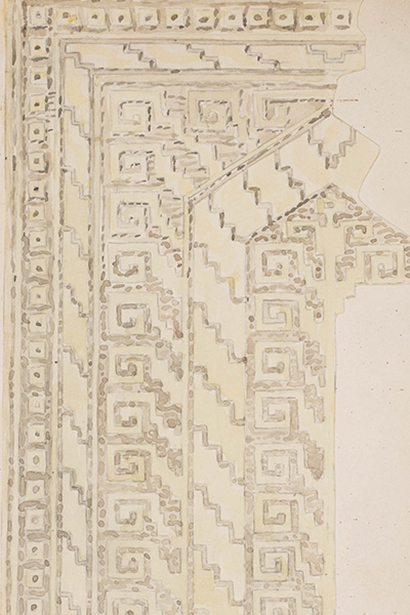Vita Spetsporten
Märta Måås-Fjetterström was inspired to produce Vita Spetsporten (the white gate) on a visit to Knossos, Crete, where she saw ancient potsherds.
The first rug was woven for a 1934 exhibition at Liljevalchs, Stockholm, initiated by Märta Måås-Fjetterström. The rug was acquired by Nationalmuseum, Stockholm.
Spetsporten has been realised in different versions and dimensions. King Gustaf VI Adolf appreciated the pattern and kept a rug at Sofiero Palace. The King also presented it as a gift to Queen Elisabeth II of the United Kingdom on the occasion of her visit to Stockholm in 1956.
Exhibited are the rug from the Royal Collections, and also a newly weaved version of Vita Spetsporten, the largest copy made.
Click on the sketch to see the image of the rug.
Photo sketch: Anette Nilsson
Photo rug: Sanna Argus Tirén/Royalpalaces.se











